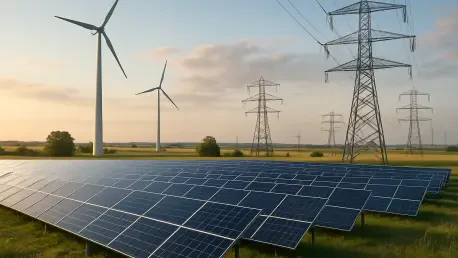Thailand stands at the forefront of a technological and environmental revolution, as the rapid expansion of its data center industry collides with an urgent need for sustainable energy solutions. With electricity demand projected to soar due to the proliferation of cloud computing and artificial intelligence (AI) adoption, the country faces a unique challenge in balancing industrial growth with ecological responsibility. A recent report by the energy think tank Ember forecasts that data centers will consume 6 terawatt-hours (TWh) of electricity by 2030, rising to 10 TWh by 2037, representing a significant portion of national energy needs. This surge, driven by an industry growth rate of 7.5–8.5% annually, underscores the importance of innovative energy policies. As global tech giants invest billions in the region, Thailand is leveraging renewable energy to power these facilities, positioning itself as a leader in sustainable digital infrastructure within Southeast Asia.
Driving Growth with Strategic Policies
Thailand’s data center boom is fueled by deliberate government initiatives designed to attract investment while promoting sustainability. A pivotal move came with the introduction of a direct power purchase agreement (DPPA) pilot project in late 2024, allowing data centers with a minimum capacity of 50 MW to source electricity directly from renewable energy providers. With a total capacity of 2,000 MW under this scheme, the policy breaks away from the traditional single-buyer electricity model, fostering competition and ensuring access to green energy. This aligns seamlessly with the sustainability commitments of major hyperscale operators like Microsoft, Amazon, and Google, who aim for 100% renewable or carbon-free energy by 2030. Such policies not only support the immediate needs of the industry but also build a foundation for long-term environmental goals, making Thailand an attractive destination for tech investments focused on clean energy.
Beyond the DPPA initiative, the Thai government’s “Cloud First” policy has played a crucial role in accelerating the adoption of cloud computing across public and private sectors. This strategic push has drawn significant inbound investments, totaling around US$3 billion from industry leaders like Amazon Web Services, Microsoft, and TikTok, among others. Additionally, a recent US$1 billion investment by Google highlights the growing demand for cloud services and AI capabilities in the ASEAN region. These financial commitments reflect confidence in Thailand’s infrastructure and policy framework, which prioritizes technological advancement alongside energy sustainability. By creating an ecosystem that supports both innovation and environmental stewardship, Thailand is carving out a competitive edge over regional peers who may lag in renewable energy adoption.
Committing to a Renewable Energy Future
On the energy policy front, Thailand’s draft revised Power Development Plan (RPDP) for 2024 marks a bold step toward reducing reliance on fossil fuels. The plan targets 51% renewable energy generation by 2037, a significant shift that involves phasing out 8 GW of fossil fuel capacity while adding 64 GW of renewable energy and storage capacity. This ambitious transition, estimated to require US$153 billion in fixed expenditure through 2037, emphasizes solar power paired with battery storage as a key solution. According to Ember’s analysis, this approach addresses the rising electricity demand from data centers while ensuring affordability and sustainability. By prioritizing renewables, Thailand not only aims to lower energy costs and emissions but also seeks to enhance energy security by reducing dependence on imported fossil fuels, setting a model for balancing growth with green priorities.
In stark contrast to regional competitors like Malaysia and Indonesia, which are exploring increased gas capacity or delaying fossil fuel phase-outs to meet similar demands, Thailand’s focus on clean energy offers a distinct advantage. This commitment resonates with global investors who prioritize sustainability, positioning the country as a preferred hub for data center operations in Southeast Asia. Ember’s energy analyst for Asia, Lam Pham, has highlighted the broader implications of this shift, noting that emerging economies face the dual challenge of economic expansion and environmental impact. By adopting home-grown renewable solutions, Thailand is demonstrating a viable path forward, fostering industrial development while aligning with international sustainability targets and inspiring other nations to follow suit.
Building a Sustainable Digital Legacy
Looking back, Thailand’s journey to integrate renewable energy with its burgeoning data center industry showcases a remarkable blend of foresight and adaptability. The strategic policies implemented, from the DPPA pilot to the “Cloud First” initiative, laid a robust groundwork for attracting global tech investments while addressing escalating electricity demands. The commitment to achieving 51% renewable energy by 2037 through the revised Power Development Plan stands as a testament to the nation’s dedication to sustainability over fossil fuel dependency. Moving forward, the focus should remain on scaling renewable infrastructure, particularly solar and storage solutions, to keep pace with industry growth. Collaborating with tech giants on innovative energy projects and refining policy frameworks will be crucial steps. Thailand’s experience offers valuable lessons for other emerging economies, proving that economic progress and environmental responsibility can indeed go hand in hand with the right vision and execution.









